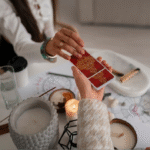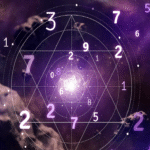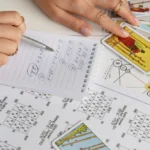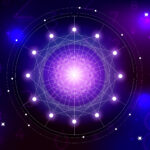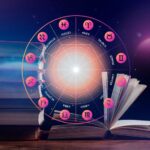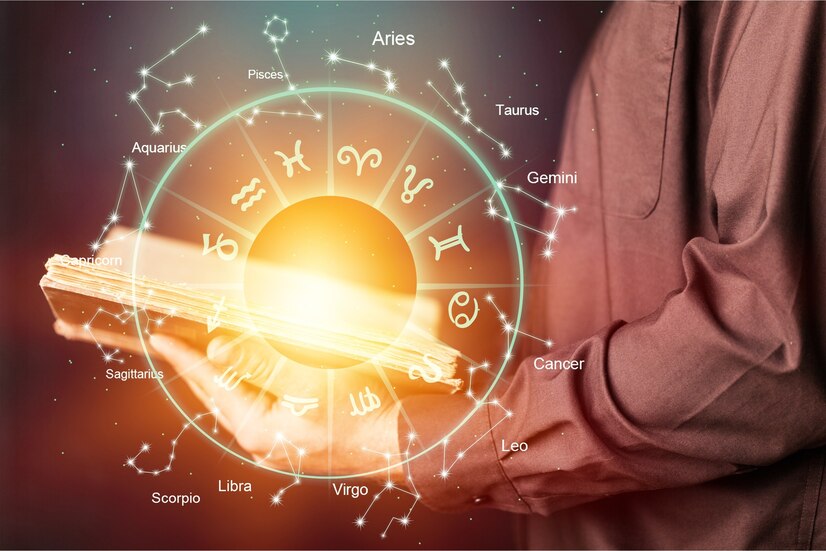The Celestial Foundations
Namaste. Today, our council addresses inquiries regarding Chiron, an astronomical body (often classified as a minor planet or cometoid) used by some modern Western astrologers. Discovered in 1977, Chiron is associated with themes of the “wounded healer.” However, like the outer planets, Chiron holds no place in the traditional framework of Jyotish (Vedic Astrology). We will discuss why Chiron is not used and how Jyotish addresses themes of wounding, healing, and mentorship through its own established principles.
The Participants:
- Rishi Veda: A Traditional Jyotishi, upholding the integrity of classical Jyotish.
- Jyotishi Anjali: A Contemporary Jyotishi, familiar with comparative astrology concepts.
- ** खोजी (Khoji) Student:** A Seeker Student, questioning the boundaries of different systems.
- Vaidya Consultant: A Practical Application Expert, focusing on Jyotish for well-being and remedies.
- Moderator: Facilitating the discussion.

Round 1: Chiron’s Place (or Lack Thereof) in Jyotish
Moderator: Rishi Veda, let’s start with the fundamental question. Is Chiron recognized or used in traditional Vedic Astrology?
Rishi Veda: Absolutely not. Jyotish is a complete system revealed by the ancient Rishis, based on the nine Grahas – the seven visible celestial bodies (Surya to Shani) and the two lunar nodes (Rahu and Ketu). These nine Grahas govern all aspects of karma, life experiences, psychology, health, and spirituality. Asteroids, cometoids like Chiron, or even the outer planets discovered much later have no place within the classical texts or traditional practice. The system is self-contained and requires no additions.
Jyotishi Anjali: From a comparative standpoint, it’s interesting to note the themes associated with Chiron in Western astrology – the “wounded healer,” bridging Saturn (structure) and Uranus (change), dealing with core wounds, holistic healing, mentorship. While Chiron itself isn’t used, Jyotish has its own sophisticated ways of exploring these very themes. It’s not that the themes are ignored, but they are understood through the lens of the nine Grahas, Bhavas (Houses), Nakshatras, and karmic principles.
खोजी (Khoji) Student: So, if someone feels a connection to the ‘wounded healer’ archetype symbolized by Chiron, how would a Jyotishi explain that experience using Vedic principles? Where does that pattern show up in a Jyotish chart?
Vaidya Consultant: Excellent question, Khoji. Themes of wounding and healing are primarily seen through:
- The 6th Bhava: House of diseases, wounds, obstacles, enemies, but also service and healing professions.
- The 8th Bhava: House of chronic illness, trauma, vulnerability, death/rebirth experiences, but also deep healing and transformation.
- The 12th Bhava: House of loss, suffering, isolation, hospitals, but also liberation and subconscious healing.
- Afflictions to the Lagna (Ascendant – body/self) or Lagnesha (Ascendant Lord).
- Afflictions to Chandra (Moon – mind/emotions).
- The influence of Shani (Saturn – suffering, limitation, chronicity, discipline needed for healing), Mangal (Mars – injury, inflammation, surgery), Ketu (strange/karmic ailments, detachment as healing), or Rahu (poisons, obsessions, psychological complexes).
- Specific Yogas indicating health challenges or healing capacities.
- The Dasha sequence activating these houses or planets.
- Mentorship themes relate strongly to Guru (Jupiter – the ultimate teacher/guide).
Rishi Veda: Precisely. The concept of a wound driving one towards healing or mentorship is deeply embedded in the understanding of karma. Difficult planetary placements or house indications (like in Dusthanas – 6th, 8th, 12th) represent karmic challenges that, when navigated consciously (often through effort, discipline, and Upayas/remedies), lead to profound growth, wisdom, and often the capacity to help others – the essence of a ‘healer’ arising from experience.
Jyotishi Anjali: The key difference is the framework. Chiron in Western astrology is often seen as a specific point signifying the wound. Jyotish sees wounding and healing potential distributed throughout the chart, tied to specific Grahas and Bhavas, activated by time (Dashas), and understood within the context of past-life karma (samskaras).
Perspective Intersection: Traditional Jyotish firmly excludes Chiron (Veda), recognizing that themes of wounding/healing are already deeply addressed by existing Grahas and Bhavas (Consultant), prompting students to understand these traditional mechanisms (Student), while comparative perspectives acknowledge the thematic overlap but maintain systemic boundaries (Anjali).

Round 2: Why Jyotish Doesn’t Need Chiron
Moderator: What are the core reasons Jyotish practitioners don’t incorporate bodies like Chiron? Vaidya Consultant?
Vaidya Consultant: Primarily, sufficiency and integrity of the system. The nine Grahas provide a complete symbolic language and predictive framework refined over thousands of years. Adding new points without a textual basis or established rules for dignity, Drishti (aspects), lordship, Karaka roles, Dasha rulership, or remedial measures would disrupt the system’s internal consistency and practical applicability. How would we interpret Chiron’s aspects? Its strength? Its role in Yogas? What remedies apply? These questions have no answers within Jyotish.
Rishi Veda: Jyotish is not simply about mapping astronomical bodies; it’s a sacred science (‘Deva Vidya’) focused on the celestial influencers designated by the Rishis as relevant to human karma. The focus is on the seven visible Grahas that exert a direct influence and the mathematically calculated nodes (Rahu/Ketu) representing the intersection of cosmic paths with profound karmic implications. Adding asteroids or distant bodies dilutes this focused, revealed knowledge.
Jyotishi Anjali: From a comparative view, while the ‘wounded healer’ is a potent archetype, attempting to force Chiron into Jyotish can lead to syncretic confusion. It’s more fruitful to understand how Jyotish already addresses this archetype through its own symbols and concepts, like the transformative potential of suffering signified by Shani or the 8th house, or the healing capacity developed through service related to the 6th house.
खोजी (Khoji) Student: It feels like trying to add a character from a different novel into a classic story – it just doesn’t fit the plot or the rules of that world. Understanding how Jyotish tells the story of wounding and healing with its own characters (Grahas/Bhavas) seems more authentic.
Hidden Wisdom: The concept of Badhaka (obstructing) planets, specific for each Lagna type, often points towards sources of persistent trouble or ‘wounds’ that require specific attention and remediation within the traditional Jyotish framework, offering another layer of understanding challenges without needing external points like Chiron.
Round 3: Addressing Wounding and Healing in Jyotish Practice
Moderator: How does practical Jyotish address these themes effectively without Chiron? Vaidya Consultant?
Vaidya Consultant: When a client comes with issues of physical, emotional, or psychological wounds, or seeks to become a healer:
- We meticulously analyze the Lagna, Chandra, Surya (vitality), and the Dusthana houses (6th, 8th, 12th) – their lords, occupants, and aspects received.
- We examine Shani (chronicity, deep lessons), Mangal (injury, assertion issues), Rahu (psychological complexes, unusual conditions), and Ketu (karmic patterns, detachment issues, spiritual crises).
- We assess relevant Vargas (like D6 Shasthamsa for health/disease, D30 Trimshamsha for deeper misfortunes).
- We analyze the current Dasha and Gochar (transits) to understand timing and activation.
- Guidance involves understanding the karmic roots of the issue, recommended lifestyle changes (often linking to Ayurveda), and specific Upayas (mantras for afflicted Grahas, gemstones if appropriate, charity, fasting, puja) tailored to the individual chart.
- For healing potential, we look for strong placements related to the 6th house (service), 8th house (transformation), Guru (wisdom/teaching), or specific Yogas indicating healing abilities.
Rishi Veda: The Upayas are key. Jyotish doesn’t just diagnose the ‘wound’; it offers time-tested methods derived from Vedic tradition to mitigate suffering and promote healing by propitiating the Grahas involved, understood as cosmic forces reflecting karmic patterns.
Jyotishi Anjali: It’s a holistic approach that integrates mind (Chandra), body (Lagna), soul (Surya), intellect (Budha), wisdom (Guru), and karma (Shani, Rahu/Ketu) in addressing challenges, rather than isolating a single ‘wound’ point.
खोजी (Khoji) Student: So the Jyotish approach seems very comprehensive and action-oriented, focusing on understanding the whole pattern and providing remedies tied to the traditional Grahas.
Critical Considerations: While Jyotish offers profound tools, healing is a complex process involving individual effort, psychological work, and sometimes conventional medical care alongside astrological guidance and remedies. No astrological system offers instant cures.
Closing Reflections: Respecting Systemic Boundaries
Moderator: What is the key takeaway regarding Chiron and Jyotish?
Vaidya Consultant: For practical guidance on wounding, healing, or mentorship using Vedic Astrology, rely entirely on the analysis of the nine Grahas, the Bhavas (especially Dusthanas), Nakshatras, Dashas, Vargas, and prescribed Upayas. Chiron is not part of this diagnostic or remedial toolkit.
खोजी (Khoji) Student: Understand that different astrological systems have different components and philosophies. Recognize Chiron as a concept from modern Western astrology and focus on learning how Jyotish addresses similar themes through its own rich and complete framework.
Jyotishi Anjali: If you are familiar with Chiron’s themes from Western astrology, use that awareness as a potential prompt to explore related configurations within the Jyotish chart (e.g., 6th/8th/12th houses, Saturn, Ketu), but interpret them using Jyotish rules and principles, not by inserting Chiron itself.
Rishi Veda: Honor the integrity and completeness of the Jyotish system as revealed by the Rishis. The nine Grahas are sufficient. Deep study and application of traditional Jyotish principles offer profound insights into all life experiences, including suffering and healing, within a coherent karmic context.
Moderator: Thank you, council. Chiron, while a meaningful symbol in some astrological circles, is not utilized in traditional or mainstream contemporary Jyotish. The Vedic system addresses themes of wounding, healing, and mentorship comprehensively through its own established framework of nine Grahas, twelve Bhavas, Nakshatras, Dashas, and remedial measures, rooted in the principles of karma and dharma.
Further Learning
- Rahu and Ketu (The Nodes) Explained in Jyotish
- Shani (Saturn) in Jyotish: Structure, Limits & Responsibility
- The Significance of Bhavas (Houses) in Jyotish (esp. 6th, 8th, 12th – Dusthanas)
- Introduction to Grahas (The 9 Planets) in Vedic Astrology
- Upayas (Remedial Measures) in Vedic Astrology

